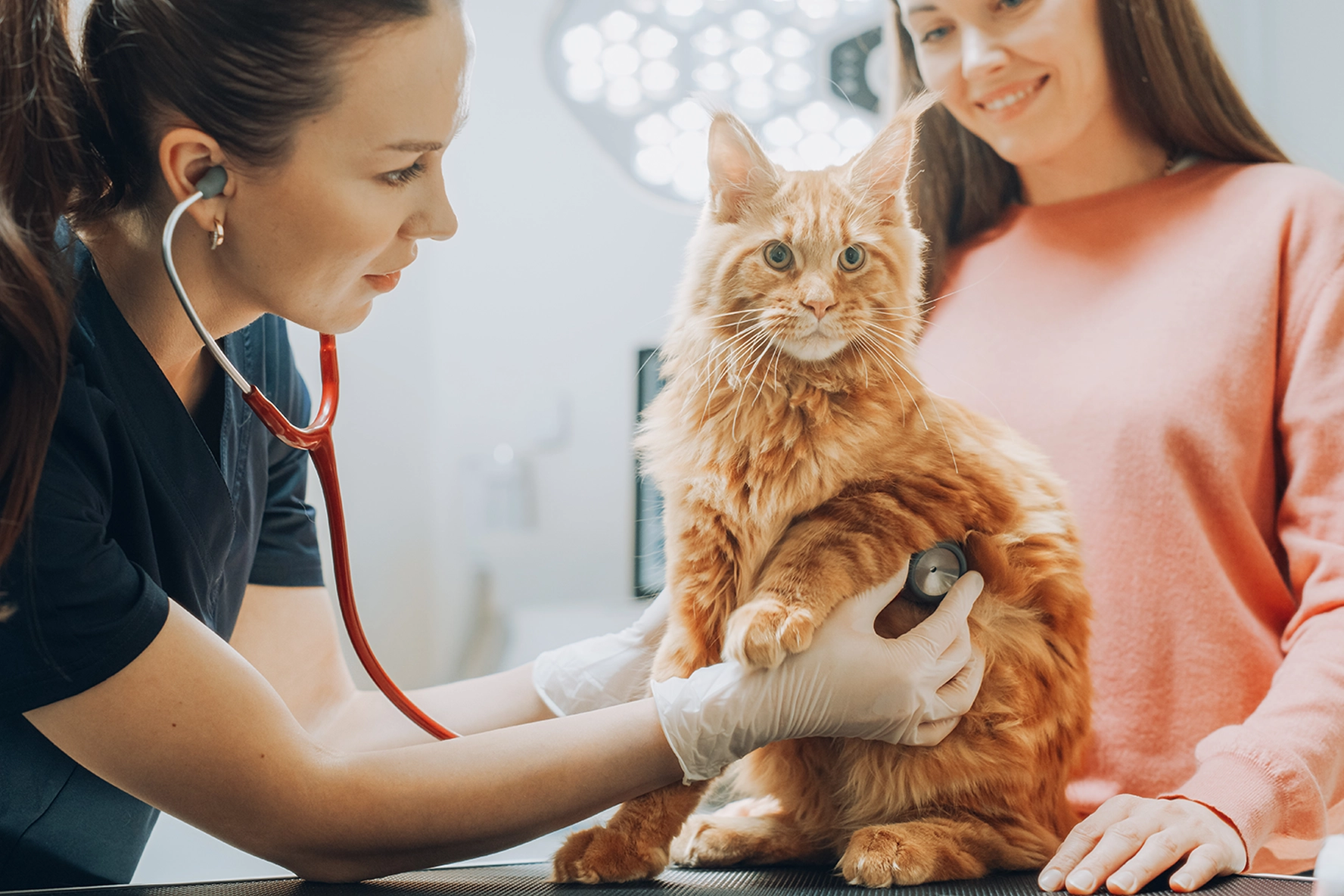
Saint Bernards are beloved for their gentle temperament, massive size, and historic history — these dogs were originally bred by monks in the Swiss Alps to rescue travelers from snowdrifts! With their kind eyes and loyal nature, it's no wonder they've become cherished family pets around the world. But like all breeds, Saint Bernards come with their own set of health concerns, including a heightened risk for certain types of cancer.
In this post, we'll explore common health issues in Saint Bernards—especially cancer risk—and what you can do to support your dog's well-being at every stage of life. While it's true that larger breeds tend to face more health challenges, including bone cancer and lymphoma, that doesn't mean there's nothing you can do. Early detection, routine vet visits, and proactive care can make meaningful differences in both quality and length of life.
Our goal isn't to overwhelm you, but to empower you. Understanding the risks gives you the tools to be a strong advocate for your Saint Bernard's health. and with those tools, you can help your gentle giants stay strong, happy, and by your side for as long as possible.
Common Health Concerns in St. Bernards
Saint Bernards are one of the biggest dog breeds, but their large size can contribute to a range of health problems that are more common in this breed than in many others. Knowing what to watch out for can help you catch issues early and make informed decisions about your dog's care.
Joint and Bone Problems
Due to their rapid growth and heavy frame, St. Bernards are prone to orthopedic issues such as hip and elbow dysplasia. These conditions occur when joints don't develop properly, leading to pain, stiffness and difficulty moving. Arthritis is also a frequent concern as they age. Regular vet checkups and joint-supportive supplements can help manage symptoms or slow progression.1,3
Heart Disease
Dilated cardiomyopathy (DCM), A condition where the heart becomes enlarged and weakened, is seen more frequently in large breeds like Saint Bernards. Early signs like coughing, fatigue, or trouble breathing can be subtle, so it's important to monitor any changes in energy or behavior.2
Bloat (Gastric Dilation-Volvulus)
Saint Bernards are at a high risk for bloat, a life-threatening condition where the stomach fills with gas and twists. This can come on suddenly and requires emergency surgery. Feeding smaller, more frequent meals and avoiding vigorous activity right after eating can reduce risk but the cause of this terrible bloat is unknown.1,2,3
Eye and Skin Conditions
With their droopy eyelids and heavy skin folds, St. Bernards often experience eye issues like entropion (where the eyelids roll inward) and the slightly less common ectropion (where they roll outward). They’re also prone to hotspots and skin infections, particularly in warm or humid environments. Regular grooming and cleaning can help prevent irritation. It’s important to understand that St. Bernards are cold weather dogs, so paying attention to them in warmer weather and being sure to take note of their panting and hydration can help them overall as well.1,2
Wobbler Syndrome
Spondylomyelopathy, also known as cervical vertebral instability, or the much easier to remember “Wobbler Syndrome,” is a condition that Saint Bernards are more likely to experience than some other breeds. Wobbler syndrome is a collection of abnormalities on the dog’s spine that accumulate commonly in the neck region. This collection of abnormalities leads to the compression and stretching of the spine and arthritic changes, which creates progressive pain and weakness, paralysis and other related symptoms. Treatment typically includes surgery, anti-inflammatory medications and physical therapy. Treatment for Wobbler syndrome typically leads to a good prognosis when the dog receives treatment early in the disease progression.1,3
Other Conditions
It is important to understand that there are other common health concerns that all pet parents should be aware of, and there is always the potential that your dog may encounter one of these other illnesses not specified here.
The aforementioned health issues are specifically discussed because St. Bernards are at a much higher risk of encountering these issues in comparison with other breeds. By staying informed about these breed specific risks, you'll be better equipped to care for your Saint Bernard and help them live a comfortable, happy life.
Cancer Risks in St. Bernards
Like with many Large and Giant breeds, Saint Bernards have a higher risk of developing certain types of cancer. While the word “cancer” can sound scary, knowing what conditions your dog may be predisposed to gives you the power to catch symptoms early and pursue treatment options that can improve both quality and length of life.
Osteosarcoma (Bone Cancer)
One of the most common cancers seen in dogs—and in St. Bernards at a higher rate than other breeds—is osteosarcoma, a fast-moving bone cancer that typically affects the legs. It often shows up as a sudden lameness or swelling in a limb. Because of their size and rapid bone growth, St. Bernards are more vulnerable to this disease than smaller breeds. If caught early, treatment may include surgery and chemotherapy, which can offer more time and comfort.1
You can learn more about osteosarcoma in our blog post here.
Lymphoma
Lymphoma is a cancer of the lymphatic system and is fairly common in larger breed dogs. It may appear as swollen lymph nodes, fatigue, or weight loss. Fortunately, lymphoma is often responsive to chemotherapy and many dogs are able to achieve remission with treatment.
In St. Bernards, the most frequently diagnosed type of lymphoma is multicentric lymphoma, a form that primarily targets the lymphatic system. This cancer typically causes noticeable swelling in several lymph nodes at once. Common areas where the swollen lymph nodes may appear include under the jaw, in front of the shoulders, behind the knees, in the armpits, and around the groin. While Multicentric lymphoma is the most typical presentation in Saint Bernards, it’s also possible for your pet to develop a less common type of lymphoma, such as gastrointestinal (alimentary), mediastinal (chest-based), cutaneous (skin-involved), and other rarer forms known as extranodal lymphomas.1
You can learn more about the different kinds of lymphoma in our post here.
Symptoms can vary quite a bit from dog-to-dog. Some Saint Bernards seem perfectly healthy aside from a swollen lymph node, while others may show more general signs of illness. Watch for fatigue, reduced appetite, weight loss, vomiting or diarrhea, labored breathing, increased thirst or urination, and in some cases, fever. These signs can overlap with any other conditions, which is why veterinary attention is so important.
Multicentric lymphoma is usually diagnosed by taking a small sample from an enlarged lymph node through a process called fine needle aspiration (FNA). This helps veterinarians identify cancerous cells and determine the most effective treatment plan.
You can learn more about how lymphoma is diagnosed in our post here.
Lymphoma Treatment Options For Saint Bernards
When it comes to treating lymphoma in St. Bernard's, chemotherapy is typically the most widely recommended approach. Because lymphoma affects the lymphatic system which spans the entire body, treatment needs to be systemic rather than localized. Chemotherapy for dogs can come in different forms, such as pills or intravenous infusions, and protocols can vary. Some plans involve rotating multiple drugs over the course of several months, while others follow a simpler schedule with a single medication administered periodically.
For Saint Bernards who aren't good candidates for intensive care due to age, other health conditions, or financial limitations, steroid-only treatment can be a compassionate choice. Steroids won't be able to bring the cancer into remission, but they can reduce inflammation and improve comfort, helping your dog feel better for as long as this treatment can offer, though it will never achieve the same kind of success as chemotherapy treatment.
You can learn more about steroid only palliative care treatment plans in our post here.
Ultimately there is no one-size-fits-all answer. The best treatment will depend on your dog's health, your goals, and what feels right for your family.
How to Get One-of-a-Kind treatment for your One-of-a-Kind St. Bernard
When it comes to treating lymphoma, many approaches rely heavily on generalized protocols based on breed or broad trends. While that can be a helpful starting point, it often doesn't account for the unique biology of your individual dog, which can leave you guessing whether the chosen treatment will actually work.
ImpriMed changes that by giving your veterinary oncologist powerful tools to personalize your dog's care.
By using cutting-edge technology and a comprehensive database of canine lymphoma cases, ImpriMed creates a personalized prediction profile for your dog. This profile then helps your vet identify which anticancer drugs are most likely to be effective for your pet specifically, allowing them to create a targeted treatment plan with the quickest timeline and best chance for success. The result? A strategy designed specifically for your job not just a general plan based on breed or averages.
With the help of ImpriMed, your St. Bernard can get a more individualized, data-driven approach that aims for longer-lasting remission and a better quality of life.


